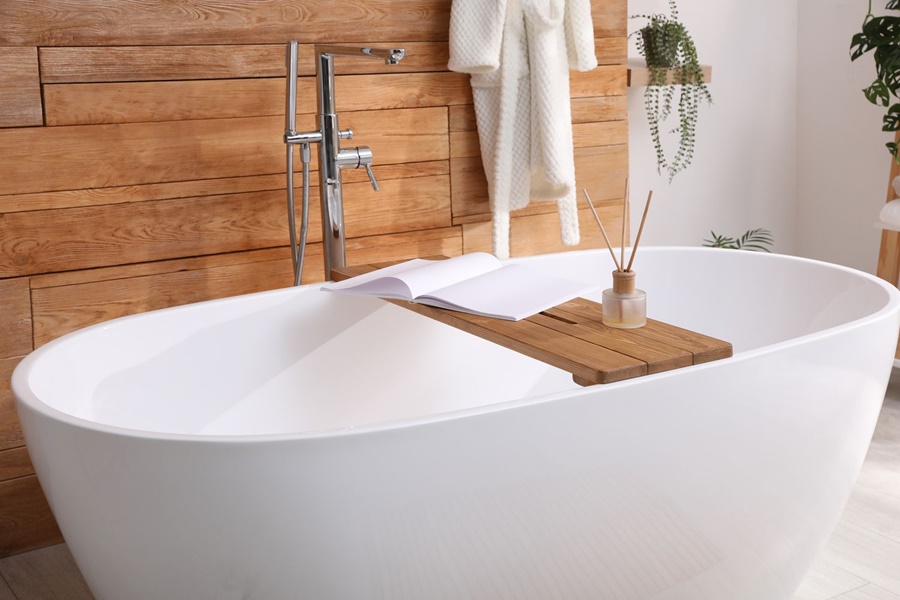When planning a bathroom renovation or simply replacing an old tub, understanding bathtub dimensions is essential. With a wide range of tub sizes available on the market, selecting the right one ensures both aesthetic harmony and functional comfort. In this guide, we provide a comprehensive breakdown of bathtub lengths, widths, depths, and capacities to help you choose the perfect fit.
Standard Bathtub Length: What’s Considered the Norm?
The standard bathtub length in the United States typically measures 60 inches (5 feet). This length is the most common in residential homes and is designed to fit comfortably within the average bathroom layout.
Standard dimensions: 60" (L) x 30" (W) x 14–16" (D)
Ideal for: Small to medium-sized bathrooms
Water capacity: Approximately 40–50 gallons
This size allows most adults to recline slightly while bathing, making it a popular choice for family homes.
Types of Bathtubs and Their Average Sizes
Bathtubs come in various types to suit different styles, needs, and space constraints. Below is a detailed look at the average bathtub sizes by type.
1. Alcove Bathtub
An alcove bathtub is installed between three walls and is the most common type found in American homes.
Length: 60 inches
Width: 30–32 inches
Depth: 14–20 inches
Water capacity: 40–60 gallons
Best for: Compact bathrooms and standard construction spaces.
2. Freestanding Bathtub
Freestanding tubs are independent units that can be placed anywhere in the bathroom.
Length: 55–72 inches
Width: 27–32 inches
Depth: 15–20 inches
Water capacity: 50–80 gallons
Best for: Luxury bathrooms with ample space.
3. Drop-in Bathtub
This tub is “dropped in” to a custom-built deck or enclosure.
Length: 60–72 inches
Width: 30–36 inches
Depth: 16–24 inches
Water capacity: 50–90 gallons
Best for: Modern or spa-like bathroom designs.
4. Corner Bathtub
Corner tubs are triangular in shape and designed to fit into the corner of a bathroom.
Length: 48–72 inches (along the longest edge)
Width: 48–72 inches
Depth: 18–24 inches
Water capacity: 70–100 gallons
Best for: Master bathrooms and large bathrooms with unconventional layouts.
5. Walk-in Bathtub
Walk-in tubs are designed for accessibility, particularly for seniors or those with mobility challenges.
Length: 48–60 inches
Width: 28–32 inches
Depth: 30–40 inches (seated depth)
Water capacity: 40–70 gallons
Best for: Aging in place or accessible bathroom designs.
How to Measure a Bathtub Properly
Knowing how to accurately measure a bathtub is crucial whether you're replacing or installing one. Here are the key dimensions to consider:
Length: From one outer edge to the other, horizontally along the longest side
Width: From one side to the opposite side across the top
Depth: From the top edge to the bottom of the interior basin
Soaking depth: From the overflow drain to the bottom
Tip: Always measure from outer edges, not the interior basin, unless you're checking user comfort.
Deep Soaking Tubs: For Ultimate Relaxation
If you're looking for a luxurious soaking experience, deep tubs offer extra depth for full-body immersion.
Average depth: 20–25 inches
Length range: 60–72 inches
Water capacity: 70–110 gallons
These tubs include models like Japanese soaking tubs and slipper tubs, which elevate the bathing experience far beyond what standard tubs offer.
Bathtub Size by Bathroom Type
Small Bathrooms
For tight spaces, consider:
Short tubs: 48–54 inches in length
Space-saving models: Corner tubs or small alcove tubs
Medium Bathrooms
Standard 60-inch alcove or drop-in tubs are ideal.
Large Bathrooms
You have the flexibility to install:
Freestanding tubs
Double-ended tubs
Jacuzzi or whirlpool tubs
Bathtub Sizes in Metric (For International Readers)
In metric units:
Standard tub length: 152–170 cm
Width: 70–80 cm
Depth: 35–50 cm
International buyers should always convert local dimensions and check the space layout before purchasing.
How Bathtub Size Affects Water Usage
Understanding the relationship between bathtub size and water consumption is important for sustainability.
Smaller tubs (40–50 gallons) are more efficient for daily use
Larger tubs (80+ gallons) require more energy to heat and more time to fill
For eco-conscious homes, choosing the right size tub can reduce water bills and carbon footprint.
Popular Materials and Their Influence on Dimensions
Bathtub size can also be influenced by the material it’s made from:
Acrylic: Lightweight, allows for larger tubs without structural reinforcement
Cast Iron: Heavier, more durable, usually in standard or smaller sizes
Fiberglass: Affordable and easy to install, common in alcove tubs
Stone Resin: Found in high-end freestanding tubs, usually thicker and deeper
Conclusion
Selecting the right bathtub length and type is about balancing style, function, space, and comfort. Whether you're going for a minimalist look with a short alcove tub or planning a spa-inspired master suite with a deep freestanding model, understanding dimensions is key. Always measure your space accurately, consider your lifestyle, and choose a size that meets both your daily use and design preferences.

